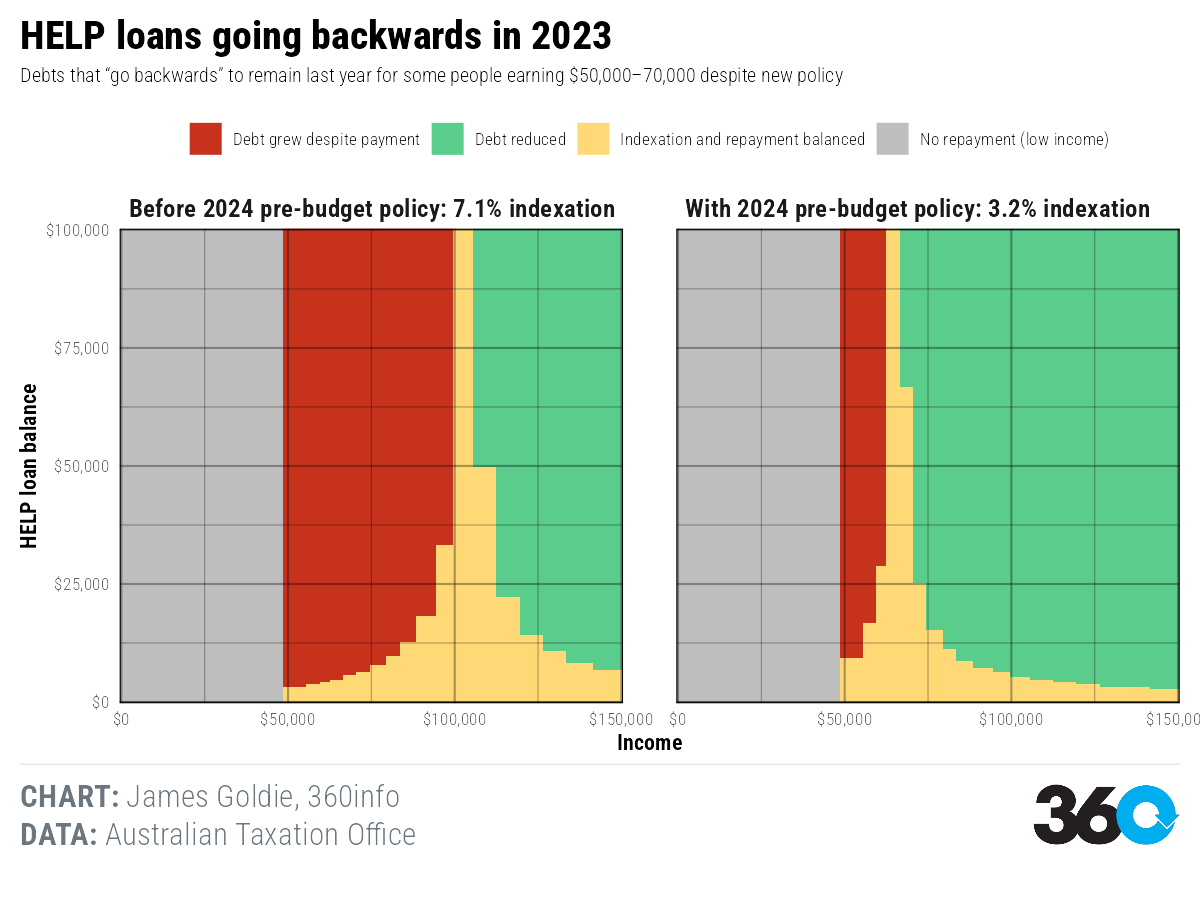Debt weight

Lower repayment thresholds and higher inflation has created a new class of hundreds of thousands of Australians with HELP debts that go backwards even as taxpayers are charged for them, 360info analysis of taxpayer data has found.
The Australian government announced a policy at the weekend intended to restrain HELP debt inflation on years when prices grow faster than wages.
This policy is set to retroactively apply from 2023. The reduction in last year’s indexation rate will see the number of people with HELP debts “going backwards” fall from 1 in 3 to about 1 in 10.
But before 2020, this phenomenon did not exist at all.
Not a single person in the Australian Tax Office’s sample of taxpayers was being indexed for more than their mandatory repayment: their debts either reduced due to their income, or their income was low enough that they had no mandatory repayment at all.
In 2020, that all changed. Some Australians with HELP debts — fewer than 1 in 20 — started being indexed more than their mandatory repayments.
Exceptionally low inflation stopped this from happening again in 2021, but in 2022 it came back with a vengeance, affecting nearly 1 in 6 people with HELP debts. Last year, spiralling inflation indexed HELP loans by 7.1 percent, sending 1 in 3 Australians with HELP loans backwards.
 “Some people with incomes of $50,000–70,000 may still see their HELP loan balances rise, despite a new government policy.”
“Some people with incomes of $50,000–70,000 may still see their HELP loan balances rise, despite a new government policy.”This year the government’s new policy may make less of a difference, as growing wages keep the indexation rate higher. Even with the policy in place, 15–20 percent of people with HELP debts could see their balance rise despite paying into their debt.
A government report released earlier in the year highlighted the particular impact of HELP loans on housing, recommending that the lending practices of banks be reviewed to ensure that HELP loans do not become a barrier to owning a home.
Originally published under Creative Commons by 360info™.
James Goldie is a data journalist and researcher specialising in climate change. He’s currently the Data and Digital Storytelling Lead at at 360info at Monash University.







